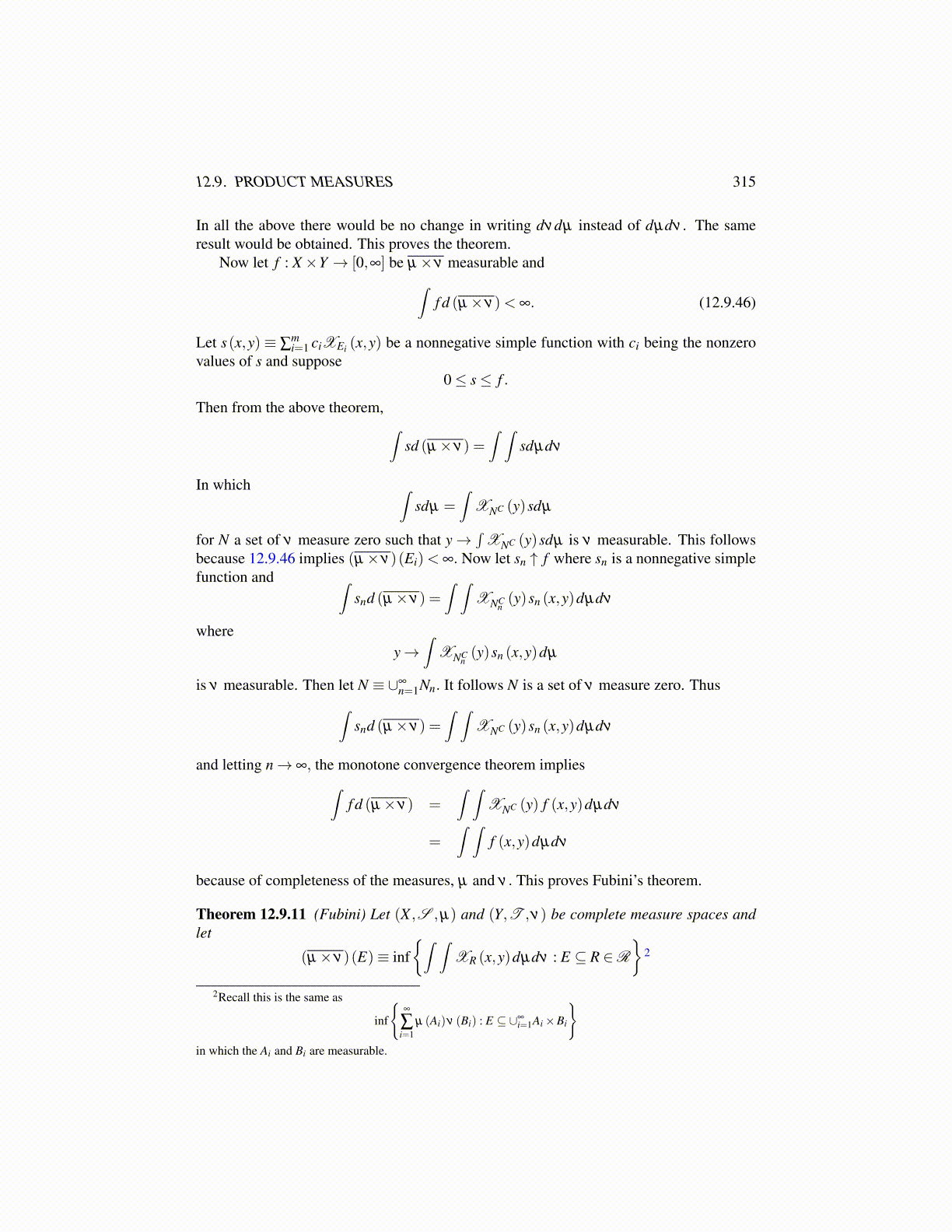
12.9. PRODUCT MEASURES 315
In all the above there would be no change in writing dνdµ instead of dµdν . The sameresult would be obtained. This proves the theorem.
Now let f : X×Y → [0,∞] be µ×ν measurable and∫f d (µ×ν)< ∞. (12.9.46)
Let s(x,y) ≡ ∑mi=1 ciXEi (x,y) be a nonnegative simple function with ci being the nonzero
values of s and suppose0≤ s≤ f .
Then from the above theorem, ∫sd (µ×ν) =
∫ ∫sdµdν
In which ∫sdµ =
∫XNC (y)sdµ
for N a set of ν measure zero such that y→∫
XNC (y)sdµ is ν measurable. This followsbecause 12.9.46 implies (µ×ν)(Ei)< ∞. Now let sn ↑ f where sn is a nonnegative simplefunction and ∫
snd (µ×ν) =∫ ∫
XNCn(y)sn (x,y)dµdν
wherey→
∫XNC
n(y)sn (x,y)dµ
is ν measurable. Then let N ≡ ∪∞n=1Nn. It follows N is a set of ν measure zero. Thus∫
snd (µ×ν) =∫ ∫
XNC (y)sn (x,y)dµdν
and letting n→ ∞, the monotone convergence theorem implies∫f d (µ×ν) =
∫ ∫XNC (y) f (x,y)dµdν
=∫ ∫
f (x,y)dµdν
because of completeness of the measures, µ and ν . This proves Fubini’s theorem.
Theorem 12.9.11 (Fubini) Let (X ,S ,µ) and (Y,T ,ν) be complete measure spaces andlet
(µ×ν)(E)≡ inf{∫ ∫
XR (x,y)dµdν : E ⊆ R ∈R
}2
2Recall this is the same as
inf
{∞
∑i=1
µ (Ai)ν (Bi) : E ⊆ ∪∞i=1Ai×Bi
}in which the Ai and Bi are measurable.